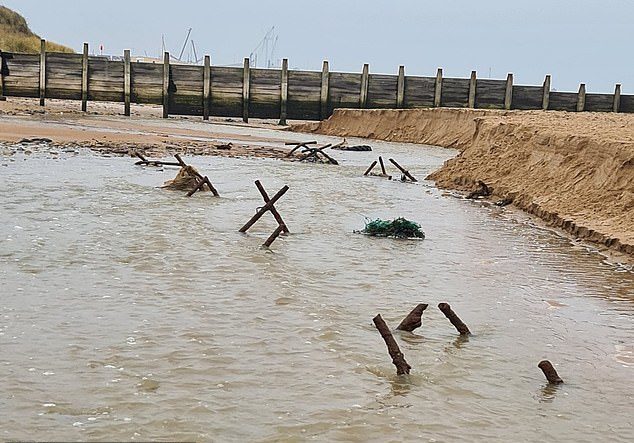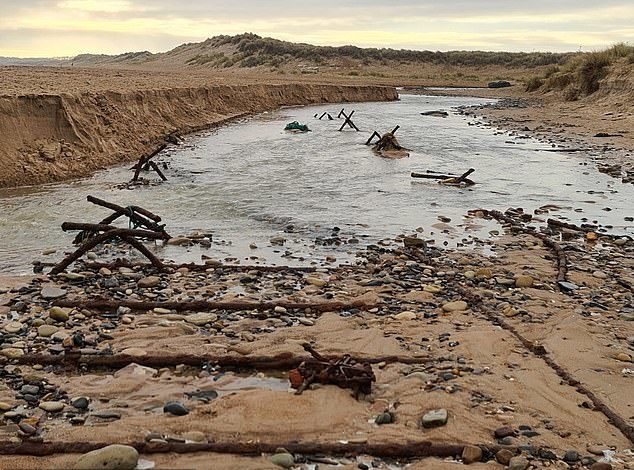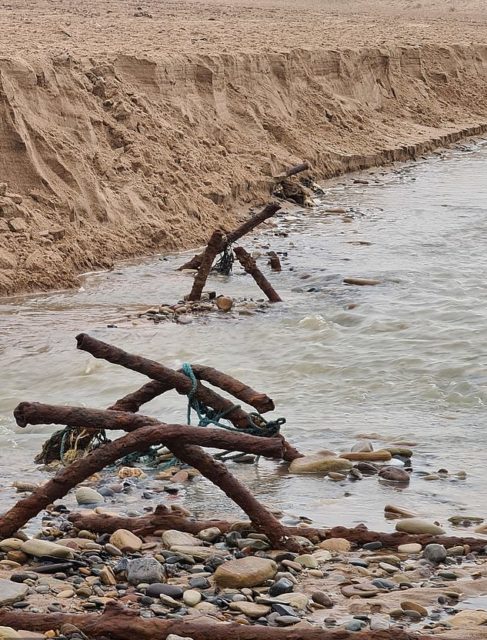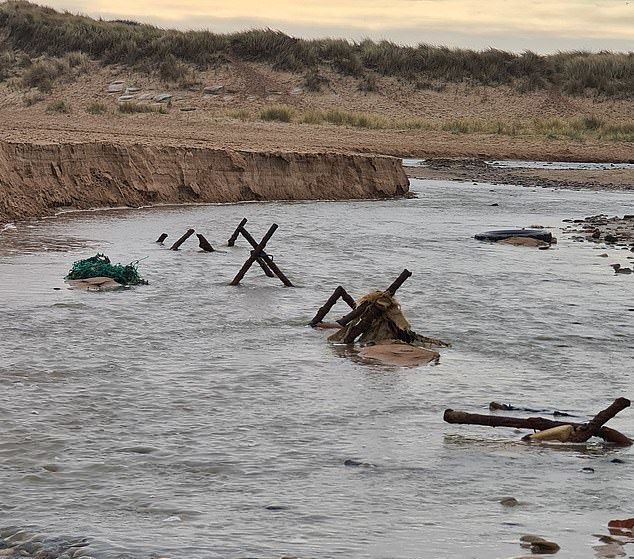Anti-tank defenses that were erected during World War II have reappeared 80 years later on the beaches of Northumberland in England.
The defenses were installed to protect the English beaches from a potential German invasion during the war.
Low tides and heavy storms have moved massive amounts of sand from the beaches in England and laid bare the anti-tank measures that had been buried.
The defenses were installed in 1940 along the eastern coastline after the defeat of the British army at Dunkirk. Dunkirk is located in northern France which was occupied by Nazi Germany at the time. Allied forces, including those from the British army, were cut off from the rest of the Allied invasion troops by German panzers and were nearly surrounded.

The troops were saved by an armada consisting of Royal Navy vessels and civilian ships in one of the more spectacular rescues of the war. The events were depicted in the 2017 Oscar-winning movie “Dunkirk” directed by Christopher Nolan.
So many men were killed during the evacuation and so many ships sunk or damaged by the Germans that it seemed likely they would be landing on British beaches before long.
1.5 million men were recruited in the Home Guard and put to work constructing fortifications all along the coast, particularly in southern England.

153 Emergency Coastal Batteries were built to add to existing batteries in order to protect ports and other areas likely to be used for an invasion.
Beaches were also protected with pillboxes along with metal posts and barbed wire that served additional duty in marking the locations of anti-personnel and anti-tank minefields. Some beaches also received large cubes of concrete to prevent tanks from driving onto the shore.
The metal posts were left after the war to rust in the sand.
An amateur photographer, Keith Armstrong, took pictures while out walking his dog.
He noticed that the low wire entanglement had been revealed when the recent floods washed away the sand that had covered them. His photos also show that tires and traps from the war were visible as well.
These defenses would have been augmented by the Blyth Battery nearby. That battery had been built to defend the beach after the bombing of Hartlepool in 1914 during World War I. It was returned to use in 1940 for the second World War.
110 soldiers manned the battery along with 5 officers. It contained two six-inch BL MK.7 guns.

This isn’t the first time storms have revealed WWII defenses in England. A heavy rain in 2017 revealed a pillbox in Embleton Bay, north of the Blyth Battery location.
28,000 pillboxes were built in WWII. Only 6,500 are believed to still survive.
Blyth Beach was the first point on the coast north of the Tyne river where the British authorities believed that an invasion was possible so it was heavily defended as were the beaches north to Berwick-upon-Tweed.
Another Article From Us: Sikorsky Boeing Defiant X: New Helicopter Includes Many Sought After Features
The German invasion plan known as Operation Sea Lion never took place so the defenses were never used.
